Ultimate Forza Horizon 4 Drifting Guide
Are you looking to become a drifting pro in Forza Horizon 4? We’ll be clutch kicking your FH4 drift career into action in this guide.
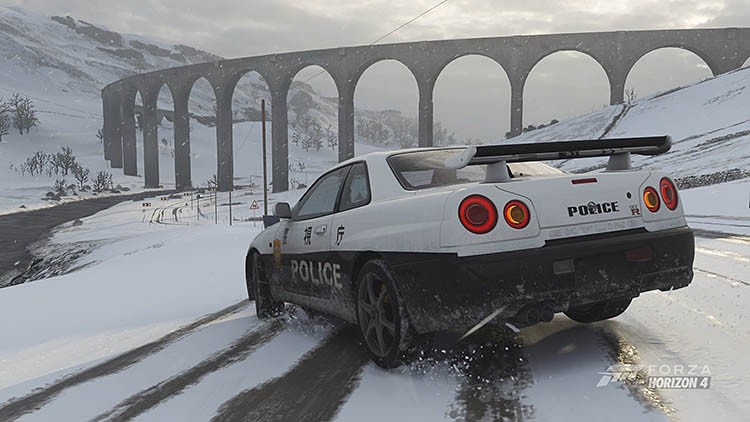
- Understanding The Basics
- Wheel Or Controller?
- Getting Started
- Picking A Drift Car And Tune
- Choosing The Right In-Game Settings
- Understanding Car Control
- The Best Place to Practice Drifting
- Best Drifting Controller/Wheel Settings
- Mastering the Art of Drifting in Forza Horizon 4
- Conclusion
Introduction
You’ve watched the YouTube videos or the Twitch streams, and you feel that you’re ready to prove you have what it takes to tandem with the best on Forza Horizon 4.
But, you pick up the controller or the wheel, and you realize that your dreams of flawlessly drifting through the Scottish Highlands aren’t anywhere near the level you hoped they’d be.
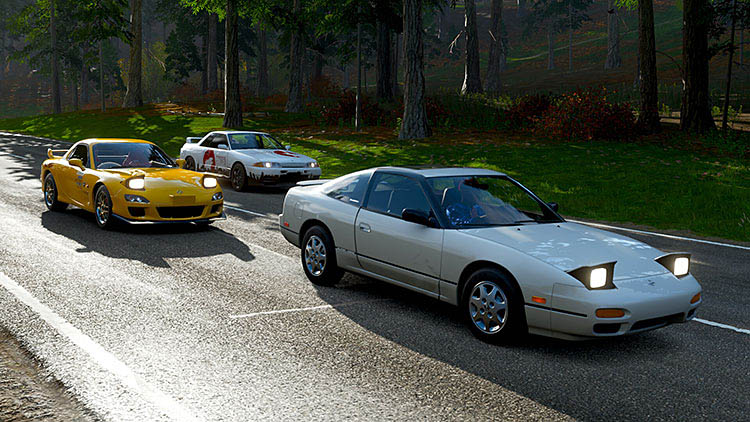
Sound familiar? Don’t worry - we’ve all been there!
Drifting is hugely different from your typical grip racing, and although you may have already mastered that (or perhaps not), it’s time to re-learn a few techniques that you may have learned over the years.
Understanding The Basics
Before we get started, we highly recommend that you watch this video from ‘Gtoofast’ on YouTube, where he uses his budget G920 setup to shred tires in the British countryside.
Try to analyze his hand and feet movements combined with the car control, and see if you can naturally pick up some handy tips right away.
Although we wouldn’t expect you to be anywhere near this skill level just yet, it’s often helpful to watch these videos to understand things like throttle control, counter-steering, and building a general idea of how to drift in FH4.
We like that you can see everything happening in real-time in these videos, making it extremely helpful.
Gtoofast also went on to prove that with enough practice within Forza Horizon 4, the skills that you’ll pick up will provide you with enough knowledge to be able to step into a drift car and show off your skills right away.
Wheel Or Controller?
Although you’ll also be able to carry out these techniques with a controller, a budget sim setup such as the Logitech G920 will provide you a far better understanding, whether you’re playing Horizon 4 on the Xbox or PC platforms.
Once you’ve got yourself a wheel setup, combined with many hours of experience within Forza Horizon 4, and the likes of simulators such as Assetto Corsa, we would expect you to be able to shred tires in real-world drift cars with confidence.
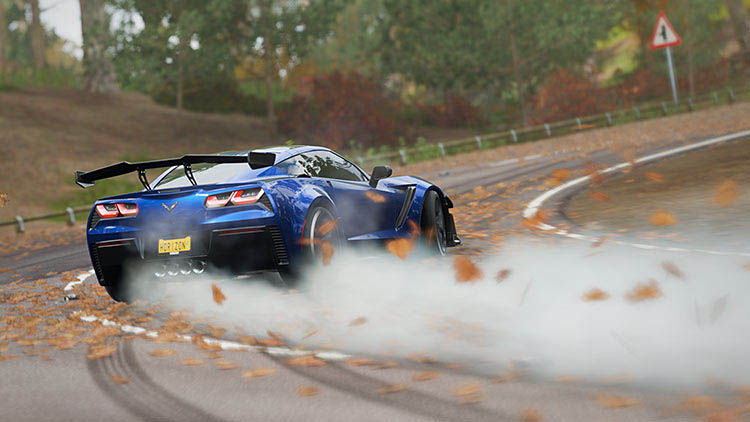
You’ll then want to check out some of our guides here at Drifted, such as Best Drift Cars for Beginners or the Best Budget Drift Cars, to get you started.
If you’ve only got a controller and no money to spare for the time being, then don’t panic, as these methods and techniques will still apply. It just makes it a little more challenging to relate when you finally get the opportunity to get behind the wheel of a real-world drift car.
You’ll want to check out this video if you’re struggling to get to grips with drifting in Forza Horizon 4 using a controller, as techniques such as counter-steering can feel a little ‘unusual’ to begin with:
If you’ve got yourself a sim setup, but you’ve realized that your PC isn’t quite up to the task, we’ve written a guide on how to find the best GPU for your needs, whatever your budget.
For those looking to go all the way with your sim setup, we’ve explored the possibilities of playing Forza Horizon 4 in VR.
Getting Started
You may have already checked out our Drift 101 and How to Drift guides, which will undoubtedly be an excellent opportunity to build an understanding when it comes to drifting.
Real-world techniques will be hugely valuable when it comes to getting to grips with drifting in Forza Horizon 4.
Although it’s more of an arcade racer than a simulator, FH4 is still impressively realistic and incredibly similar to real-world drifting.
However, you’re a lot more likely to destroy your car if you crash into a lamppost in reality. Please don’t do that – there aren’t any bonus points in real life!
Picking A Drift Car And Tune
You’ve probably already got your heart set on a drift build that you want to get drifting in right away, and we completely get that.
As long as the car you’ve chosen uses the front-engine, rear-wheel-drive layout, then it’s likely to be ideal for the job, but we would recommend starting with some of the more obvious choices.
It’s essential to have a decent base drift setup on the car, or there’s a possibility that it’ll hold you back from the start.
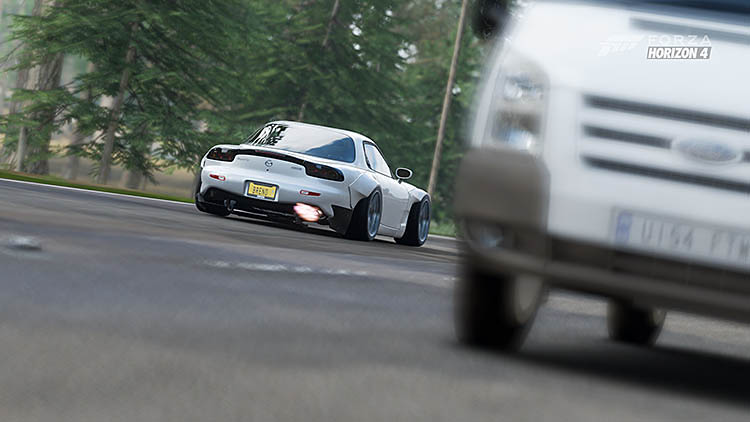
You could be the most talented Horizon 4 drifter on the planet, but with a terrible drift tune, you’re still going to struggle to lay down the perfect line.
We’ve compiled a few guides to get you started, and first of all, you’ll want to choose an ideal drift car.
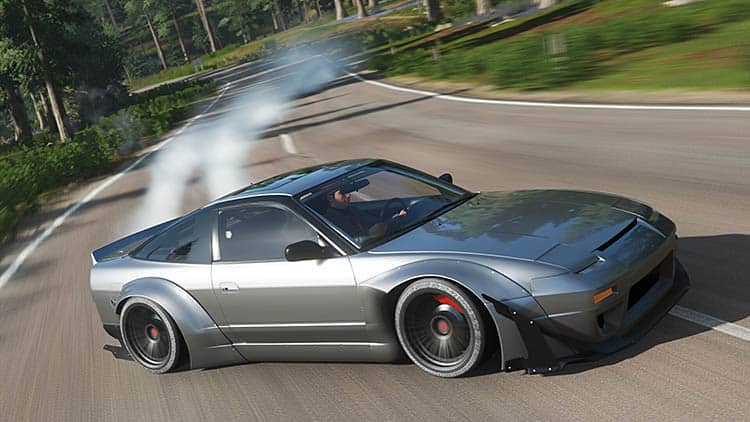
Then, you’ll want to either use our guide for a base 350Z drift tune or find an alternative tune online or on the Storefront.
Just remember that Storefront tunes aren’t able to be modified. Therefore, when it comes to perfecting your drift tune or carrying out an engine swap, you’re going to be limited by the in-game restrictions.
One of the great things about FH4 is its multiplayer options, so if you are struggling to get the hang of drifting then you can always ask a friend to lend a hand.
Choosing The Right In-Game Settings
Getting the correct settings is, once again, vital to achieving your full potential. It may seem daunting to turn off the driver aids initially, but this is the only way you’ll truly learn how to control your drift car.
With the wrong settings, you’ll struggle to get your car sideways, let alone hold a consistent drift.
Here are the perfect in-game settings to get the most out of your drift car in Forza Horizon 4:
Braking - ABS Off
We prefer to use ABS off for maximum car control.
You can use ABS if you’d rather, but real-world drift cars rarely use ABS, so it’s a great way to refine your braking skills.
ABS off will also allow you to maximize your left-foot-braking potential, which you’re likely to find hugely helpful when you begin doing tandems with friends and other players later on.
Steering - Normal
There’s no real right or wrong here, but it boils down to personal preference, and for us, that’s with ‘normal’ steering.
Although you’ll find yourself rapidly switching left and right to steer, in our opinion, it’s the more comfortable option to get to grips with drifting. However, it’s worth giving both a try to see what suits you best.
Traction Control - Off
Ugh. Traction control. No, just no. Some of you may use it for racing, but for drifting, it’s going to fight against your car when you try to drift.
The last thing you want is a driving assist stopping you from sliding.
Stability Control - Off
Like traction control, this is an absolute no for drifting. We don’t recommend either for complete beginners, as it’s more likely to confuse and frustrate you than it is to assist.
Shifting - Manual, or Manual W/Clutch
For beginners, we would only ever use ‘MANUAL’ transmission as a minimum, and we recommend that you also do so from the start.
Those that have some driving, or drifting experience, give ‘MANUAL W/CLUTCH’ a try and see how you go.
You may be thinking it’s a pointless gimmick, but the clutch plays a significant role in refining your drifting ability, and utilizing clutch kicking will improve your skills as you progress.
If you’re new to driving entirely, you can start with Auto if you feel it’s necessary, but we always recommend manual from the start. Auto is just annoying and is likely to leave you in the wrong gear.
Driving Line - Optional
We’ll leave you to decide whether you’ll benefit from this to get you started.
It won’t affect how the game plays; it’ll just give you an idea of the racing line that the game advises.
Just remember that this isn’t a drifting line, but if you’re getting started, it may give you an idea of assessing the speed to approach a corner in advance.
Damage & Tire Wear - Optional
These boil down to personal preferences, and we leave it off, especially for longer sessions, as we feel it’s more for racing than drifting.
Although the tire wear feature can be fascinating to see how they’re heating up, they’ll soon be rendered useless, and the repeated need to pit or exit soon becomes an unnecessary waste of time.
Rewind - Optional
We always leave this on, as it can sometimes help turn back the clock when we mess up on a corner. If only the real world were this simple!
Understanding Car Control
If you’re looking to learn the basics, then we highly recommend checking out this video, which will be perfect when it comes to showing you how to get the hang of drifting in the game:
Believe us, we know how frustrating it can be when you’re starting to learn drifting, and you feel as though you’re never going to reach your goal of laying down the ultimate drifting combos.
But, with enough trial, error, combined with an embarrassing amount of spins and crashes, we’ve got no doubt that your persistence will eventually pay off as you get better at drifting.
Once you’ve put in the time and effort to learn the basic techniques, it’ll feel hugely rewarding when you begin to gain a thorough understanding of car control, along with weight balance and counter-steering.
Once you’re feeling confident that you’re ready to head to the streets and show off your new-found drifting skills, it’s time to move on to the more advanced drifting techniques.
The Best Place to Practice Drifting
We’ve found that the best place to put your new-found drifting skills to the test is located in the skid pan/donut area, which can be found just outside of the Festival.
This location provides the perfect opportunity to use the ‘donut’ to learn how to maintain the drift and stick to the inner and outer boundaries, which you can pretend are clipping points or zones.
Carrying out your drifting practice in the area will help you refine your skills without crashing out repeatedly, which soon gets frustrating.
Once you’ve mastered the basics, you can head to the in-game drift zones, where you’ll then be ranked on your drifting ability, providing the perfect opportunity to build up your progress.
Remember, learning how to drift is a gradual process, so try and remember to remain patient, even if you feel like you’re not making quick progress.
Best Drifting Controller/Wheel Settings
By this point, we hope that you’ve clocked in some serious seat time and that you’re feeling confident with having mastered the basic drifting techniques.
If you’re feeling like you’re still not getting the most out of your setup despite plenty of drift action, there’s a chance it may be holding you back. In this case, it’s worth researching the specific settings for your setup to maximize the potential.
We’ve used this guide with the Logitech G920, which we found to work exceptionally well, so we’d highly recommend these settings:
For those of you opting to use the controller, we’d recommend you give these settings a try:
Mastering the Art of Drifting in Forza Horizon 4
Now that we’ve covered everything, from getting your first drift car and tuning it to its full potential, right the way through to getting the correct in-game and wheel/controller settings, you should now be all set to tackle the most challenging drift zones in Forza Horizon 4.
At this point, we once again highly recommend heading over to our How to Drift guide, which will provide you with all the knowledge you could ever want when it comes to perfecting your drifting technique. You may also want to check our Forza Horizon 4 cheat guide here.
However, to keep things simple so that you can begin putting your skills to the test on the streets, we’ll provide a summary of the essential aspects that you’ll need to consider to push closer to the top of the drifting leaderboards.
Step 1 – Initiation (Starting the drift)
When it comes to drifting, initiation is the first stage of the process. If you’re trying to run the perfect line, then you’ll want to achieve the best initiation possible.
You can either execute the initiation yanking (or pressing) the e-brake, which is the more straightforward method, but it will somewhat slow the car down.
If what you’ve learned so far has all fallen into place, we would much rather see the ‘Power Over’ weight transfer, where you aggressively turn the wheel in the direction of the corner you’re entering while applying a significant amount of throttle.
Once you feel (or see) the back end of the car starting to step out, you’ll need to counter-steer into the opposite direction of the corner while maintaining or increasing the throttle.
At this point, you’ll need to juggle the throttle and the steering as your car nears opposite-lock, but make sure you don’t spin out - this is when you’ve achieved maximum angle.
If you’re not aggressive enough with the throttle, the car is likely to understeer. If you’re too aggressive, then you’ll most probably end up spinning out or needing to make some significant corrections.
As with everything in drifting, practice makes perfect when initiating into a corner, so spend some time learning the various techniques to achieve mastery.
Step 2 – Maintaining the drift (Staying sideways)
Once you’ve got the hang of initiations in various scenarios, it’s time to learn how to maintain the drift that you’ve executed.
The back end has stepped out, and you’ve ‘caught’ the weight shift by making precise adjustments to the steering and throttle, and now it’s time to put your foot down.
You’re likely to require more throttle than you would expect at this point to control the drift, and you may even end up holding full-throttle if it’s a larger corner.
However, be sure not to let the car repeatedly bounce off the rev limiter at this point.
If it’s reaching it too early, and the next gear isn’t useful enough to keep the rear tires spinning, then you’ll need to head to our tuning guide to learn about adjusting the gearing.
Assuming you’ve got the gearing right, you’ll need to focus on drifting through the corner using a smooth ‘arc’, which is usually the typical racing line.
In dry conditions, expect to use at least 80% throttle to maintain the drift, but don’t be afraid to back off it entirely if necessary. You’ll need to play about with this to perfect the throttle control.
If you feel the car is rotating too far and generating too much angle, then ease off the gas until it returns to the correct position, also counter-steering to correct at the same time if necessary.
Once it returns to the correct position, calmly re-apply the throttle once again to continue maintaining the drift.
Although this will seem unnatural at first, the videos above will explain what you need to do when it comes to counter-steering and throttle control.
If you’re continually spinning out at this point, try using less steering angle or throttle.
Alternatively, if you’re not maintaining the drift, try calmly applying more throttle once you feel like the car is about to straighten.
Eventually, the aim of maintaining the drift will be to consistently throw down runs where you’re repeatedly testing the full steering lock of the car while achieving the maximum speed possible.
Step 3 - Transitioning
In drifting, transitioning is when you switch the car from drifting in one direction to another to navigate the next corner.
There’s no shortage of corners in the British countryside, so it won’t be long until you’re put to the test in Horizon 4.
Be prepared – there’s a lot to think about here, and it all happens quickly, so you’ll undoubtedly need to keep trying to get it right.
While maintaining the drift, add a little more angle into the car and then lift off the throttle until the rear wheels grip up slightly.
At this point, if you’ve mastered letting go of the wheel in the initiation and maintaining stages, you can let the wheel glide in your hands.
On a controller, you’ll likely need to encourage the car to flick in the opposite direction.
As the car’s weight quickly shifts, you’ll need to catch the wheel before the back end steps out too far, but don’t expect to catch the perfect angle, as you can then make minor throttle and steering corrections to achieve this.
Try to do this as calmly as possible, as a well-executed transition will leave the car doing the hard work, where you’ll need to catch it before it’s too late, before re-applying the maintenance steps.
It’s vital to remember the mistakes you make during the transition so that you can correct them on your next attempt.
Step 4 – Exiting the Drift
Now that you’ve initiated the drift, maintained it, and then transitioned, it’s time to exit the drift before patting yourself on the back!
You likely think that you’ll need to let go of the throttle at this point, but that’s not the case and can often make the car snap in the opposite direction.
What you need to do is to maintain or perhaps even increase the throttle while slowly turning the wheel, as you feel the back end of the car begins to regain traction and straighten up.
As you feel it regain grip, gradually ease off the gas and use minor, smooth steering adjustments until the car heads in a straight line.
Stay calm and steady on the power, providing enough throttle until the car returns to its natural state.
Congratulations, you’ve now (hopefully) successfully initiated, maintained, transitioned, and exited your drift!
It’s now just a matter of refining each of these skills and perhaps using advanced methods such as power-over, clutch kicking, shift lock drift, feint drift, and many other techniques found in our How to Drift guide.
Conclusion
Always remember, patience, persistence, and practice are vital when it comes to learning how to drift.
At first, it can feel hugely overwhelming and unnatural compared to standard ‘racing’, and it’s likely going to take far longer than you anticipated to perfect the art of drifting.
We highly recommend taking the time to watch the videos above and ensure that you’re absorbing all the information and techniques provided, as we’re sure that these, combined with our information, will build your confidence as quickly as possible.
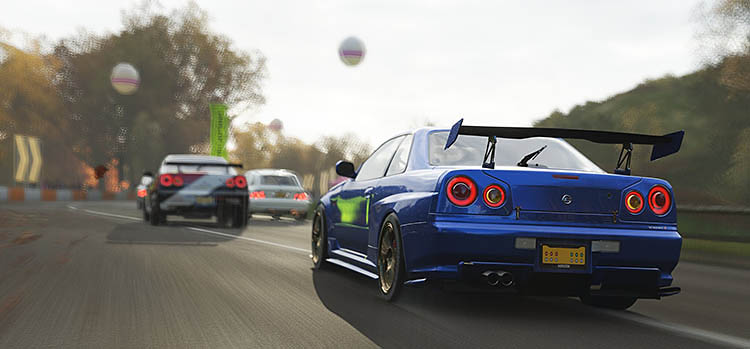
Thankfully, drifting is a massive part of the Forza Horizon series, and we hope that it’ll play an even more significant role in the upcoming next-generation Forza Horizon 5.
Before then, you’ll also get to enjoy putting your drifting skills to use on the track in the upcoming Forza Motorsport game, which weirdly hasn’t been named Forza Motorsport 8.
Remember, drifting is all about having fun, and we guarantee you that after you’ve put the time and effort into learning how to drift, you’re going to enjoy Forza Horizon 4 more than ever once you’re confidently doing street tandems with the homies!
We hope we’ve provided you with everything you need to know about drifting in Forza Horizon 4. If you’re still not confident with drifting, then make sure you re-cap this article or head over to our How to Drift guide.
Thank you for reading our How to Drift in Forza Horizon 4 guide.
If you enjoyed this article, please share it with the buttons at the bottom of your screen. If you’ve found this information useful, then please take a moment to share it with other Xbox or PC gaming enthusiasts. We appreciate your support.
Photography credits
We thank the following entities for the use of their photography in this article:


 (7 votes, average: 4.43 out of 5)
(7 votes, average: 4.43 out of 5)














